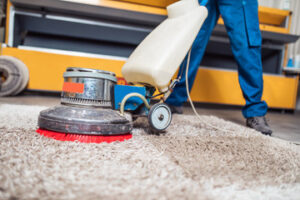Attorneys are licensed to represent clients in court. They must pass the bar exam, complete a law degree, and meet state-specific requirements, such as passing a character evaluation. Contact Attorney Big Al now!
The terms attorney and lawyer are often used interchangeably, but there are differences between the two professions that are worth understanding. These distinctions help people seeking legal advice or representation find the right professional to meet their needs.

Attorneys have many education and training opportunities to pursue as they build their careers. Many universities offer undergraduate courses that can help cultivate essential skills, such as writing proficiency and research ability. In addition, many law school programs provide externships and clinics that allow students to work on real cases with a mentor. These opportunities help students gain hands-on experience and hone their skills, including legal writing, oral advocacy, and preparing for and giving depositions.
Some law schools also offer accelerated JD programs, which allow students to shave years off their educational journey and graduate in a shorter amount of time. These programs typically require three years of undergraduate studies, followed by three years of law school. Those interested in a fast-paced path to becoming an attorney can also consider pursuing a joint BA-JD degree, which allows students to finish their undergraduate studies during the second year of law school.
Beyond law school, attorneys can further their education by pursuing a master’s degree or doctorate in specific areas of the law. While these additional degrees aren’t required to become an attorney, they can enhance an attorney’s resume and provide additional opportunities for employment.
In addition to continuing education, lawyers are also required to undergo training to maintain their licenses and keep up with changes in the law. Depending on state law, this can include training in ethics, the law, and professional development. In New York, for example, all attorneys are required to complete 24 hours of Continuing Legal Education every two years, including four hours in ethics and professionalism and one hour on diversity and elimination of bias.
For attorneys looking to boost their career, there are also numerous lawyer training opportunities available online. These training programs can include free or low-cost courses offered by edX, Coursera, Udemy, and LinkedIn Learning. Taking the time to assess your own needs and select the right types of lawyer training can make you more competitive and increase your career satisfaction. Consider also reaching out to a professional coach, joining a legal network, or focusing on developing your expertise in a specific area of law.
Licensing
To practice law in the United States, attorneys must be licensed to do so. Each state’s licensing authority regulates the legal profession to maintain its integrity and to protect consumers of legal services. The states generally allow the public to access a database of attorney license information, and they usually provide ways for people to find out whether an attorney is licensed and in good standing in that jurisdiction.
The main criterion for becoming an attorney is successful completion of a bachelor’s degree and a Juris Doctor (JD) degree from an accredited law school. Generally, candidates must also pass the Multistate Professional Responsibility Examination (MPRE), which tests them on their knowledge of legal ethics. They must also undergo a character evaluation or background check and take a sworn oath of admission to the bar before they can become licensed in a particular jurisdiction.
In addition, attorneys are bound by a code of ethics and must adhere to the Model Rules of Professional Conduct when engaging in practice. If an attorney violates these guidelines, he or she may face discipline from the state bar. The bar’s hearing department investigates complaints against lawyers and can impose a variety of penalties, including suspension or disbarment. An attorney may challenge a decision of the bar court by appealing it to the state’s highest court.
Lawyers can change their specialties in the course of their careers. This is usually because someone who already practices in that field recommends them to a client, or because they are asked to handle a case outside their area of expertise. Lawyers can also change their areas of practice because they are no longer interested in it, or because they realize they are not as competent in that arena.
Attorneys can also be involved in the licensing of trademarks, copyrights and other intellectual property rights. These are complex areas of the law, and even a small detail overlooked can lead to significant losses. It is crucial for individuals and businesses to have the guidance of an experienced attorney who can navigate the statutes, regulations, guidelines and other policies that govern these matters.
Practice Areas
A lawyer’s practice area is the category or subcategory of law that they specialize in. Examples include personal injury and DUI defense. Attorneys must choose the right practice areas to advance in their careers and stay competitive in the legal industry. Attorneys can also choose to focus on a specific type of case or client, such as family law, civil rights or real estate. Practice areas are defined by both the American Bar Association and state laws, with some requiring lawyers to get certified or complete additional courses before calling themselves specialists in their fields.
The best way to determine what practice area is the right fit for you is to look at your strengths and weaknesses. For instance, if you are not comfortable communicating with people, don’t pursue divorce or family law. If you are a poor writer, don’t work in a field that requires extensive document drafting. If you have trouble standing in front of large crowds, don’t go into litigation or criminal law.
Corporate law is concerned with the day-to-day legal affairs of businesses, including contracts, compliance, and liability. Lawyers in this field must be detail-oriented to deal with complex matters that could affect a company’s future. This is one of the highest-paying practice areas for attorneys.
Criminal law is involved with any violation of the penal code, from traffic infractions to capital offenses. This is a highly demanding field that requires a high level of commitment, as the prosecution and defense of a criminal case takes months to complete.
Civil rights attorneys are dedicated to defending the constitutional rights of individuals and groups. This area of the legal system can be emotionally challenging, as many cases require a deep understanding of what individuals are facing.
Elder law is another field that can be challenging for attorneys, as it involves working with older clients and often requires empathy and patience. In this area of the law, attorneys are involved with their clients’ daily lives, as well as handling important legal matters like drafting wills and trusts.
Technology and data privacy are emerging areas of law that are creating more opportunities for attorneys. These industries are increasingly regulated, with more complex laws surrounding issues such as GDPR and non-fungible tokens (NFTs). As these laws develop and evolve, it will be essential for attorneys to be on top of their game to remain competitive.
Skills
Attorneys must have a variety of hard and soft skills to be successful. These include research skills, writing proficiency, and logical thinking. In addition, effective verbal communication and advocacy are essential for lawyering roles, as they involve articulating complex legal arguments to different audiences. Lawyers should also possess strong leadership skills to manage their teams and practice effectively. Developing these skills can be done by seeking out leadership opportunities, including taking on roles in student organisations or community projects, or through participating in law-related workshops and seminars.
Advanced research skills are critical for lawyers, as they must have the ability to sift through a huge amount of information and identify relevant legal precedents quickly. Moreover, lawyers should be proficient in legal databases and technology tools to streamline their research processes. Aside from research, writing is an important skill for attorneys, as they must be able to craft persuasive legal documents such as contracts and pleadings. This can be developed by taking writing courses, focusing on persuasive strategies, or by seeking out internships and clerkships that provide real-world advocacy scenarios.
Logical thinking is a key skill for lawyers, as it enables them to tie facts to the appropriate law. This is a skill that is learned in law school and honed over years of legal practice, and it’s essential for the successful delivery of legal services. Lawyers must also have excellent business management skills, as they must be able to bill and process payments, market their practice, and hire and manage employees.
Lawyers must be able to work under pressure, as they will often face tight deadlines and stressful situations on the job. They need to be able to prioritise tasks, maintain meticulous records, and ensure all aspects of a case are covered. Lawyers should also be able to adapt to change, as the legal landscape is constantly evolving and they must be able to adjust their strategies accordingly.
As the legal profession becomes increasingly collaborative, it’s crucial for Lawyers to be able to work in team-based environments. This includes being able to communicate and collaborate with colleagues across practice areas, as well as with experts from other industries to deliver comprehensive legal advice. In addition, having a good understanding of clients’ businesses can help Lawyers align their legal strategies with business objectives and provide more strategic advice.








